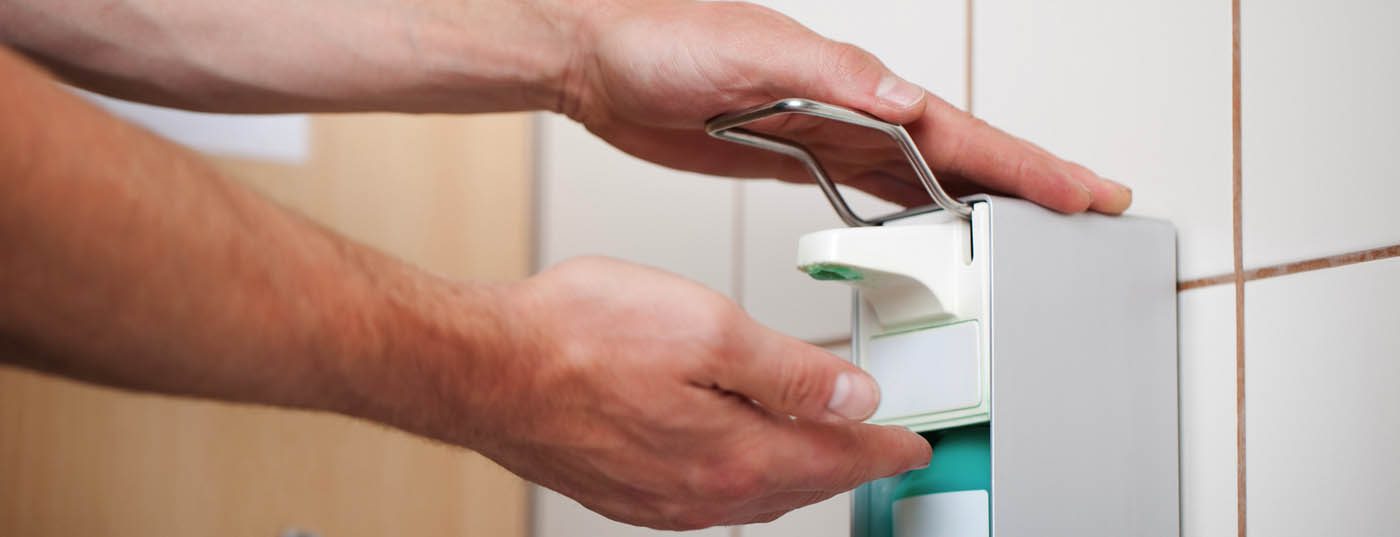In the primary care practice, safety goals established by law must be achieved when using medical devices. The dipl. Hygiene consultant Sibylle Scheibler-Bivi explains what is important.
We are familiar with reports of epidemics, pandemics and new infectious diseases from the media. Diseases such as HIV, hepatitis, influenza characterize everyday working life. However, new and/or exotic infectious diseases continue to emerge, such as SARS, avian or swine flu, and Ebola.
On the other hand, there are also repeated reports of poor hygiene, nosocomial infections and an ever-increasing risk of infection for patients, which is increasingly no longer just a problem for hospitals. Medical practices and nursing homes are also increasingly confronted with this problem.
New innovative treatment methods with technically complex instruments as well as the occurrence of infections of a non-microbial nature (Creutzfeld-Jakob disease) require appropriate measures in medicine and especially in instrument reprocessing. Patients and medical staff have also become more demanding in terms of safety; they require ever better hygiene measures.
Regulations of the Therapeutic Products Act
To what extent have you clarified and settled everything in your practice? Are you and your staff properly trained and up to date? How are hand hygiene, the handling of patients, the procedure for needlestick injuries, targeted cleaning and, if necessary, disinfection or instrument reprocessing regulated? What is controlled, logged, documented, how and when? In the Therapeutic Products Act(www.admin.ch/ch/d/sr/c812_21.html), under the term duty of care (Article 3, HMG), it is stipulated that manufacturers and users of medical devices must take all measures required by the state of the art in science and technology to avoid endangering human and animal health. Standards and regulations are not laws. However, anyone who does not implement them must be able to prove that the deviating mode of operation nevertheless takes into account the state of the art in technology and science, and that the legally required safety objectives are met to the same extent. The burden of proof lies with the manufacturer/user of the medical device – i.e., you as the primary care physician.
Define responsibilities
Small steam sterilizers – also known as practice autoclaves – are normally used in a practice. The European standard EN 13060 applies to them. Sterilizers are distinguished between classes “B”, “S” or “N”. Class “B” are sterilizers suitable for sterilization of packaged medical devices. With this type of sterilizer, which uses a fractionated steam-vacuum process, all instruments can be sterilized unwrapped or in different packaging variants. However, this requires appropriate validation/revalidation of the device, depending on the load and packaging used. With a class “B” autoclave, you are on the safe side in any case. If you do not yet own a small steam sterilizer, you can find helpful procurement instructions at www.swissmedic.ch/produktbereiche/ 00450/00633/index.html?lan.
The steps preceding the actual sterilization (disinfecting pretreatment, cleaning, disinfection, inspection/care and packaging) are aimed at reducing microbial, chemical and particulate contamination as well as reducing any pyrogenic substances present. Anyone who is responsible for the reprocessing of sterile medical devices must have the necessary resources, such as equipment, premises, trained personnel, equipment and information systems. The responsibility for carrying out the reprocessing process must be defined and recorded in writing. Written work instructions for all steps of the reprocessing process as well as standardized protocols that comply with the standards should be in place – and followed.
Professional training for the staff
The person in charge has the experience and necessary training for instrument reprocessing and must undergo regular further training (see e.g. www.hplus-bildung.ch/bildung/showcourse/wiederaufb-von-med-produken-in-aerztl-praxen-ste-mpa).
The personnel must have sufficient basic and professional training (e.g. medical practice assistant) with integrated specialized training concerning the reprocessing of medical devices. Specialized training must specifically address cleaning and disinfection, inspection and packaging of medical devices, autoclave operation, sterilization, sterilization quality assurance system, hygiene and safety. If no specific specialized training could be completed, it is recommended to take an appropriate training or continuing education course. Training records must be retained.
Personnel must protect themselves from contamination and injury when manipulating open and dirty instruments. For this purpose, it has the necessary protective equipment such as liquid-tight over-apron, protective goggles, gloves, etc. Eating, drinking and smoking are prohibited in the rooms used for reprocessing medical devices.
Instrument preparation must take place outside the treatment zone, preferably in a separate room which is used only for this purpose. This must be divided into three storage zones. All used instruments are deposited in the zone marked in red. Manual or machine cleaning and disinfection and, if necessary, rinsing also take place in this zone. The water must at least meet the criteria for drinking water. The visually clean and dry instruments can then be checked, cared for and packaged for sterilization in the yellow-marked zone – after hand disinfection has been completed – without gloves. In the green zone, sterilization takes place in the steam sterilizer. Crossing of the instrument path must be avoided. All steps in instrument preparation must be recorded and visualized. All instrument reprocessing records must be kept for ten years. Cleaning/disinfection of the premises and surfaces is part of the hygiene plan.
Risk-based Processing measures
The transport of contaminated medical devices between the treatment room and the “Steri” must be organized in such a way that all contamination risks for persons and the environment are excluded. The manufacturer’s specifications and instructions, in particular regarding concentration, exposure time and duration of use of the product used, must be strictly observed.
Medical devices to be reprocessed are divided into three classes depending on their risk of infection. The necessary reprocessing measures are therefore risk-based:
- Non-critical medical devices: These are characterized by the fact that they have only superficial contact with the skin during use.
- Semicritical medical devices: They come into contact with the mucosa or with non-intact skin during use.
- Critical Medical Devices: This class includes products that penetrate the skin or mucous membrane during use and come into contact with blood, internal tissues or organs, and wounds. Also included are products intended for use in connection with blood, blood products, sterile medicinal products and medical devices. These products must be sterile for use. These include, for example, intravascular catheters, puncture needles, biopsy forceps, e.g. for endoscopes, acupuncture needles, urine catheters, hand instruments. Germ-reduced or sterile?
Manual, preferably machine, cleaning and disinfection of medical devices prior to sterilization is essential. It serves to reduce the amount of microorganisms. Manual cleaning/disinfection must always be followed by a non-recontaminating rinse, preferably with distilled or osmosis water, and drying of the medical devices before packaging. The cleaned and disinfected medical devices must be protected from recontamination. Dry medical devices must be packaged immediately after cleaning/disinfection and function check. The medical device in the packaging must be identifiable.
For critical thermostable reusable medical devices, steam sterilization with saturated steam at 134 °C with a holding time of at least 18 minutes is mandatory (see Ordinance on the Prevention of Creutzfeldt-Jakob Disease in Surgical and Medical Interventions of November 20, 2002). The use of the dry heat method is not permitted for critical medical devices. Only a medical device that has been sterilized in its packaging is considered “sterile” by definition; openly (unpackaged) sterilized medical devices are only germ-reduced.
Products Liability:
Keep documents
The following tests and measures are prescribed before the sterile goods are released:
- Control of the recorded sterilization parameters (pressure, temperature, time)
- Visual inspection of the treatment indicators on the packaging
- Visual inspection of each package (moisture, damage, etc.)
- Control of the batch indicator.
All these steps must be documented on the corresponding protocol and be signed by the person performing them.
The daily log allows tracing the procedure and contains:
- Date and number of the sterilization cycle
- Sterilizer identification
- List of the number and type of medical devices contained in the batch
- Recording of the sterilization cycle (device printout)
- Result of the controls performed (vacuum test program and Bowie&Dick test)
- Batch release document signed by the responsible person.
For product liability, the necessary documents must be kept for at least ten years after the last use of the product.
Before using the sterile material, the user must carry out the following checks:
- Expiration date control
- Visual control of the treatment indicators
- Visual inspection of the packaging for integrity.
Check steam sterilizer daily
The standards require that a VPR test (vacuum test) and a Bowie&Dick test must be performed before the first batch of instruments (daily or when sterilized). These tests must be documented. A daily routine check of the steam sterilizer by means of the Bowie&Dick test is prescribed or recommended for the operation of sterilizers (DIN EN 13060).
For class “B” autoclaves, a helix test according to EN 867-5 is also recommended if hollow instruments are sterilized. The Helix test places a higher demand on the sterilizer. It must be performed in addition to the Bowie&Dick test if medical devices with hollow bodies are sterilized.
Revalidation with reference loading
Operators of sterilization equipment are obliged to carry out maintenance and servicing work on a regular basis. This work serves to maintain operational readiness. Please consult the instructions of the manufacturer of your device.
In addition, regular revalidation should be performed. This increases the operational safety and should be carried out annually according to the recommendation of the standard CEN ISO TS 17665-2 (chapter 12.4) or according to the manufacturer’s instructions. For this purpose, a reference load defined individually for the respective practice should be created, which depends on the instruments and packaging used. The results must be evaluated and recorded in a revalidation report. A suitable specialist company can help you with this.
The following SWISSMEDIC publications provide further information:
- Good practice for the reprocessing of medical devices in medical and dental practices and other users of small steam sterilizers
- Guidance for the validation and routine monitoring of moist heat sterilization processes in healthcare.
Sibylle Scheibler-Bivi
www.almedica.ch












